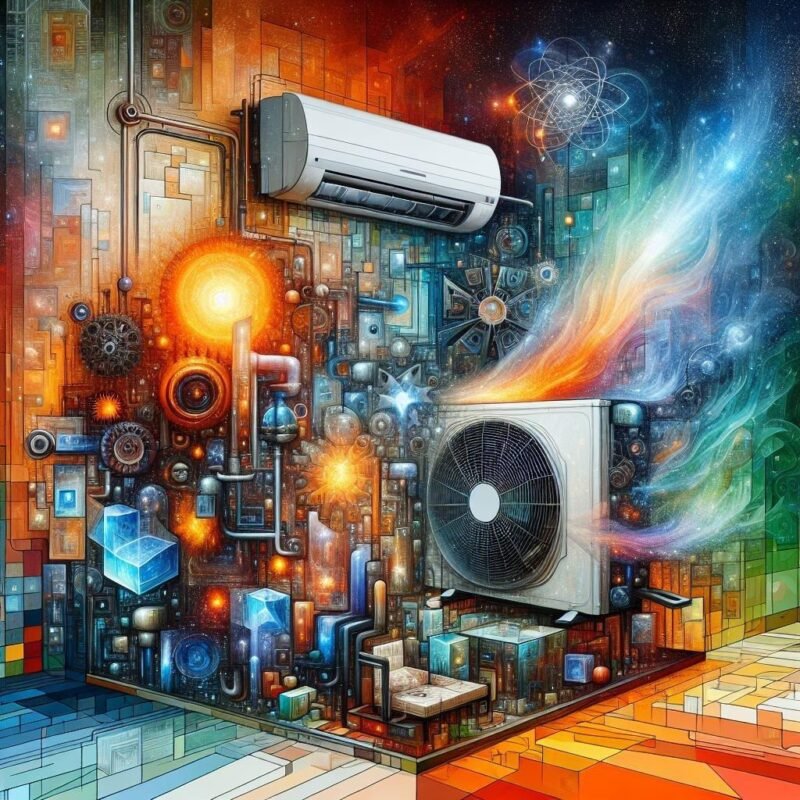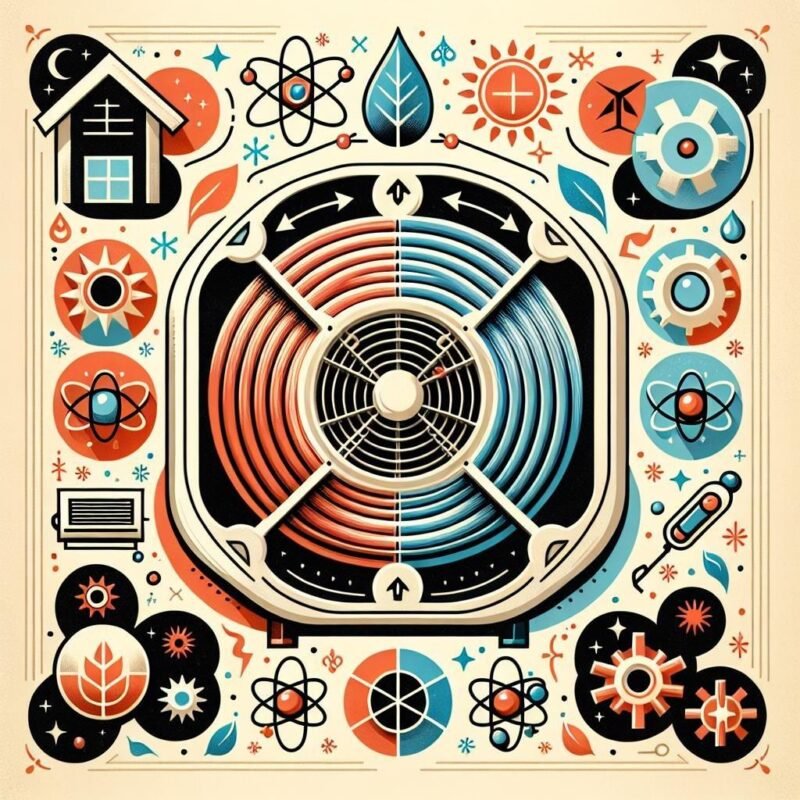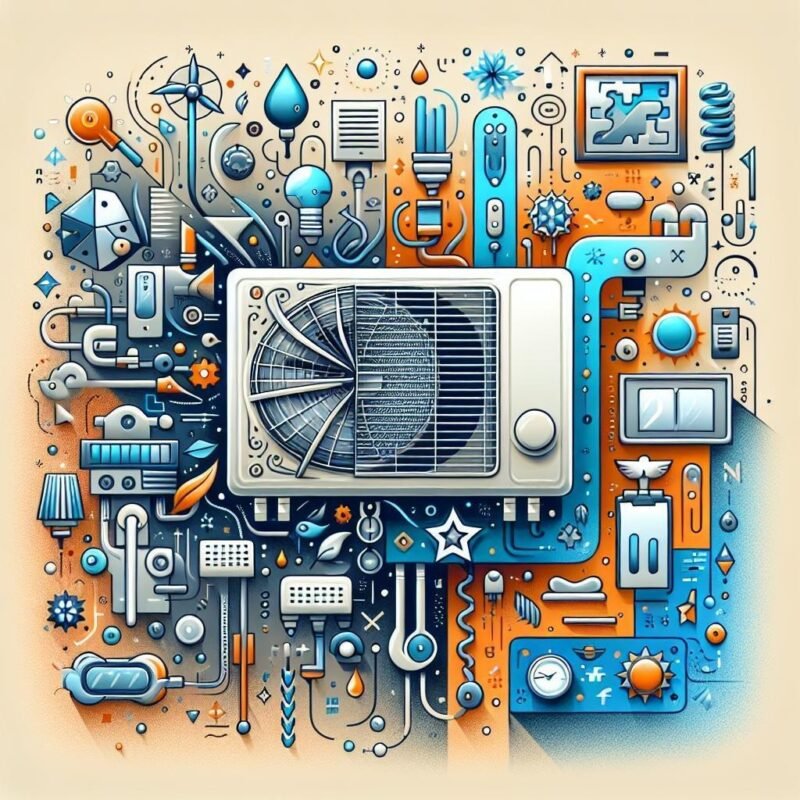What is the best way to troubleshoot common issues with a mini split AC unit?

Picture this: It’s a scorching summer day, and suddenly your trusty mini split AC starts acting up. We’ve all been there – that moment of panic when cool air turns warm, strange noises emerge, or mysterious water starts dripping where it shouldn’t. but fear not! Whether you’re a DIY enthusiast or simply trying to avoid an unnecessary service call, knowing how to troubleshoot your mini split system can save you time, money, and those dreaded sweaty moments. let’s dive into the world of mini split mysteries and uncover the secrets to keeping your cool when things heat up.
Check Your Mini Split Like a Pro: Essential Diagnostic Steps
Mastering the art of mini split diagnostics begins with understanding the tell-tale signs of potential issues. Start by listening carefully to your unit’s operational sounds - any unusual clicking,grinding,or whistling could indicate trouble.Next, monitor the airflow by placing your hand near the vents and checking for consistent temperature distribution. pay special attention to these key indicators:
- Display panel error codes and blinking lights
- Ice formation on indoor or outdoor coils
- Water leaks or unusual condensation
- Changes in cooling or heating performance
- Unexpected power consumption spikes
Once you’ve identified potential problems, focus on a systematic evaluation of your system’s components. Inspect the filters monthly and clean them thoroughly to prevent restricted airflow.Test the remote control functionality and verify that all modes (cooling, heating, fan) work properly. Examine the outdoor unit for debris accumulation and ensure proper clearance around it. For more complex issues, use this handy reference guide:
| Symptom | Swift Check | Action Required |
|---|---|---|
| No Power | Circuit Breaker | Reset/Replace |
| Weak Airflow | Filter Status | Clean/Replace |
| Strange Noise | Fan Operation | Inspect/Tighten |
Understanding Those Strange Noises and performance Changes: Your Troubleshooting guide
Have you ever been startled by a mysterious clicking sound or an unexpected whoosh coming from your mini split? These auditory surprises, while alarming, often tell us important stories about our unit’s health. Strange noises like buzzing, rattling, or whistling typically indicate specific issues that need attention. Pay attention to whether these sounds occur during startup,operation,or shutdown,as timing can be a crucial clue in identifying the root cause.
Beyond the symphony of sounds, your mini split might also exhibit performance quirks that serve as valuable diagnostic indicators.Watch out for these common signals:
- Reduced airflow paired with a humming sound often points to a clogged filter
- Clicking noises with delayed startup suggest thermostat communication issues
- Grinding sounds accompanied by weak cooling indicate potential fan problems
- Gurgling noises with inconsistent temperature control typically mean refrigerant troubles
| Sound Type | Likely Cause | Urgency Level |
|---|---|---|
| Rattling | Loose Components | Medium |
| Screeching | Fan Motor Issues | High |
| Bubbling | Refrigerant Flow | Low |
quick Fixes and DIY Solutions for Common Mini Split Hiccups
Got a misbehaving mini split? Before reaching for the phone to call a technician, try these simple yet effective solutions that could save you time and money.A minor airflow issue might just need a thorough filter cleaning – simply pop it out, give it a gentle wash with mild soap, and let it dry completely before reinsertion.Temperature fluctuations frequently enough stem from incorrect sensor placement, so ensure your remote isn’t sitting in direct sunlight or near heat-generating appliances.
Strange noises and minor leaks can be tackled with basic DIY skills too. Here’s what you can safely attempt on your own:
- Clean debris from the outdoor unit using a soft brush
- Tighten loose mounting brackets to stop rattling sounds
- Clear condensate drain line with vinegar solution
- Check and clean fan blades from dust buildup
- Reset system settings to factory defaults
| Issue | DIY Solution | Time required |
|---|---|---|
| Weak Airflow | Filter Cleaning | 15 mins |
| Water drips | Drain Flush | 20 mins |
| Unit Vibration | bracket Check | 10 mins |
When to Call the Experts: Red Flags That Need Professional Attention
While DIY troubleshooting can solve many mini split issues, certain situations demand immediate professional intervention. If you notice unusual burning smells, here grinding noises, or observe smoke coming from any component, shut down your system immediately. These signs could indicate serious electrical problems or mechanical failures that pose safety risks to your home and family.
Sometimes, the warning signs are more subtle but equally critically important. Keep an eye out for these critical indicators:
- Ice formation on the indoor or outdoor unit during summer
- Frequent circuit breaker trips when the unit is running
- Refrigerant leaks or bubbling sounds from the lines
- Complete loss of cooling or heating capacity
- Error codes that persist after basic troubleshooting
- Water dripping from the indoor unit’s front panel
| Warning Sign | Potential Risk | Response Time |
|---|---|---|
| Burning Smell | Electrical Fire | Immediate |
| Refrigerant Leak | System Damage | 24 Hours |
| Grinding Noise | Motor Failure | 48 Hours |
Q&A
Q&A: Troubleshooting Common Issues with Your Mini Split AC Unit
Q: What are the first signs that my mini split AC might have a problem?
A: Great question! Keep an eye out for any unusual sounds, like clanging or hissing. If your unit is blowing warm air or seems to struggle maintaining a consistent temperature, that’s often a red flag.And don’t forget about the smell-if there’s a musty or weird odor,it might be time to investigate further!
Q: What should I do if my mini split isn’t cooling my space properly?
A: If your AC feels more like a fan,there are a few steps to follow! First,check the air filters-clean or replace them if they’re clogged. Next, make sure outdoor units aren’t obstructed by leaves or debris.check the remote settings-sometimes, it’s as simple as having the wrong mode selected!
Q: I hear strange noises coming from my mini split. What could be causing this?
A: Strange noises can be alarming! A low hum might just be the compressor doing its thing,but if you hear rattling,it could mean something’s loose. Whirring or grinding could indicate worn-out components. If the sounds persist, don’t hesitate to call in a professional. After all, you wouldn’t ignore an unusual noise coming from your car, right?
Q: What if my mini split is leaking water?
A: Water leakage can seem like a mini-panic moment, but hold on! Start by checking the condensate drain line-clogs here are a common culprit. Look for ice buildup on the indoor unit, which might indicate low refrigerant levels. If you’re still puzzled, a certified technician can help pinpoint the problem faster then you can say “cool breeze.”
Q: How frequently enough should I maintain my mini split system?
A: think of your mini split like a pair of running shoes-they need regular care! Clean or replace filters every one to three months, and consider a seasonal professional check-up. Annual maintenance is a great way to keep everything running smoothly and grab an extra mile (or cool breeze) out of your unit!
Q: When should I call a professional rather of troubleshooting myself?
A: It’s fantastic to be a DIY enthusiast, but know your limits! If you’ve checked the basics and issues persist-like electrical problems, refrigerant leaks, or any major repairs-it’s time to call in the experts. Remember, it’s better to be safe in the cool embrace of comfort than risk a DIY disaster!
Q: Any last tips for keeping my mini split AC happy?
A: Absolutely! Keep the outdoor unit clear of debris, check the filters regularly, and if possible, create a regular maintenance schedule. Tuning into your unit’s needs and reading up on these troubleshooting tricks can keep your mini split in top shape. A happy AC means a cool home-what’s not to love?
Set your mini split AC unit up for success and enjoy its cooling magic all summer long!
In Summary
troubleshooting your mini split AC unit doesn’t have to be an uphill battle. Armed with a little know-how, a dash of patience, and perhaps a helpful toolkit, you can turn potential headaches into minor hiccups.Remember, whether it’s checking your filters, ensuring proper drainage, or keeping an eye on the settings, a proactive approach can save you both time and money. And if all else fails, don’t hesitate to call in the pros! After all, you deserve to bask in the cool comfort of a well-functioning unit. Here’s to cool summers and cozy winters-now go forth and keep your chill alive!






















